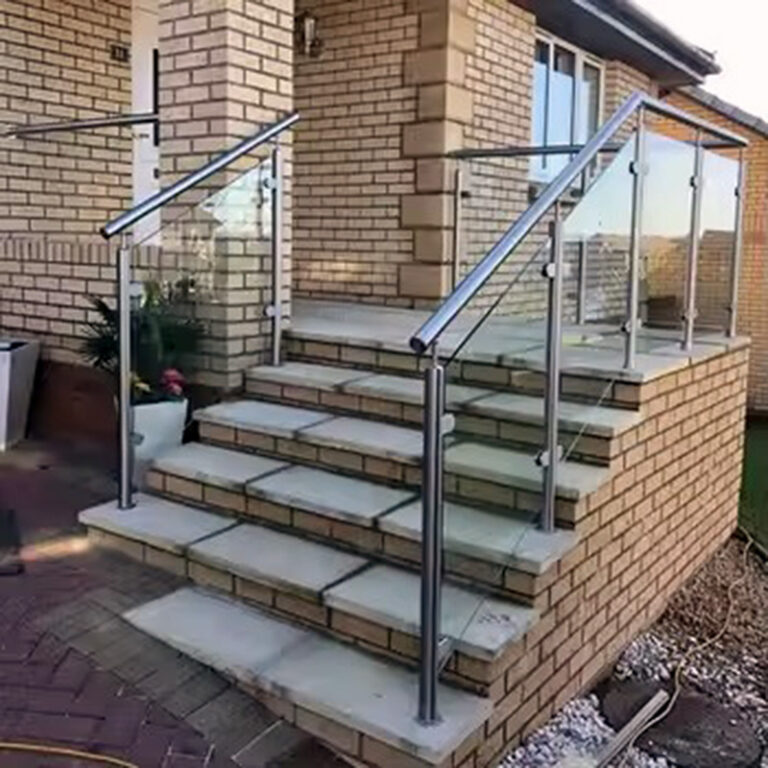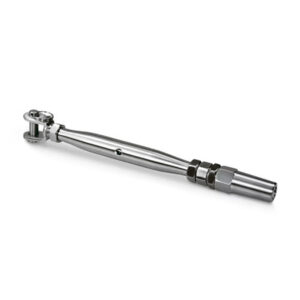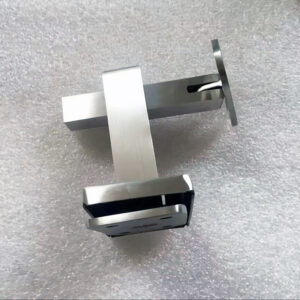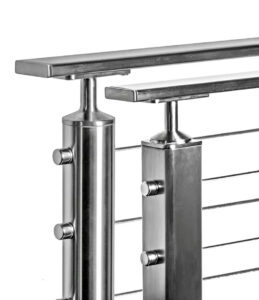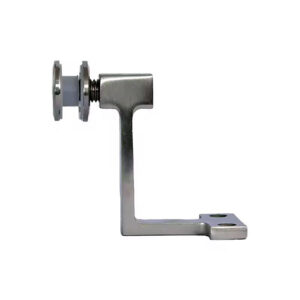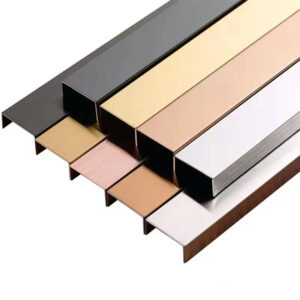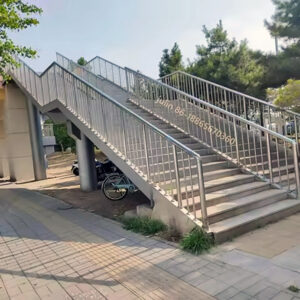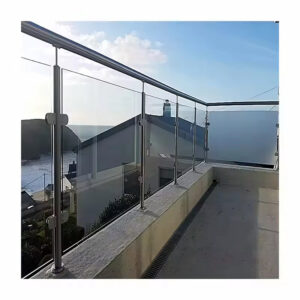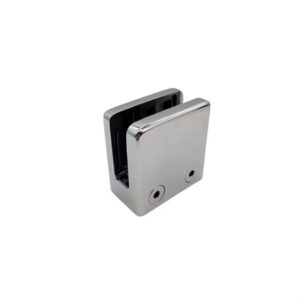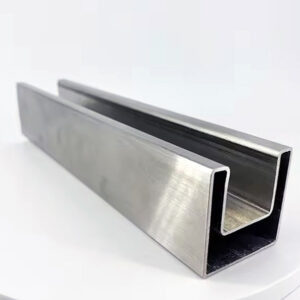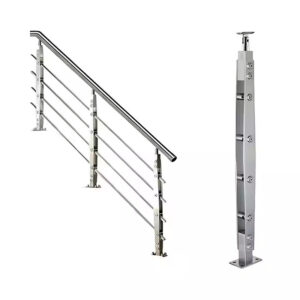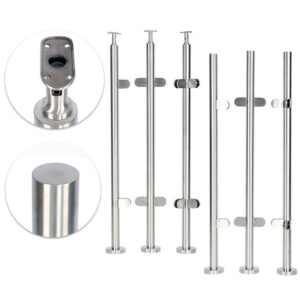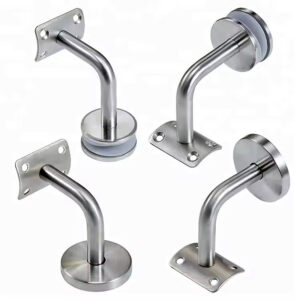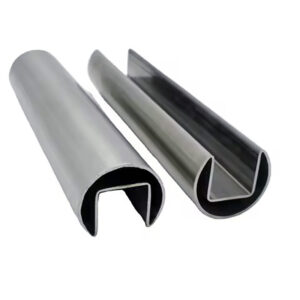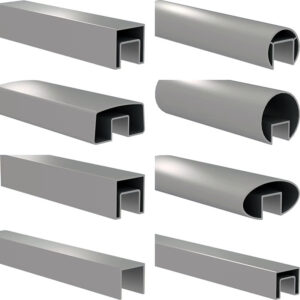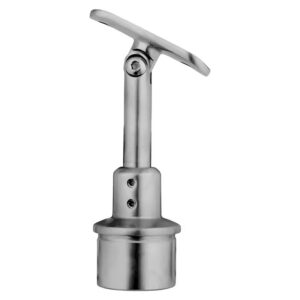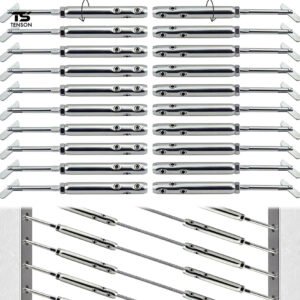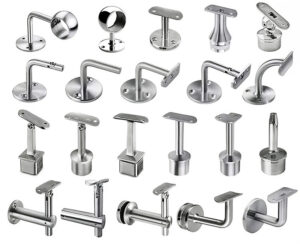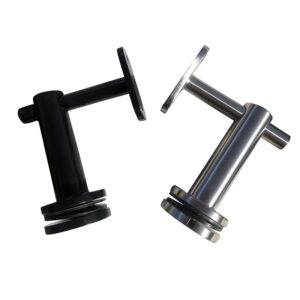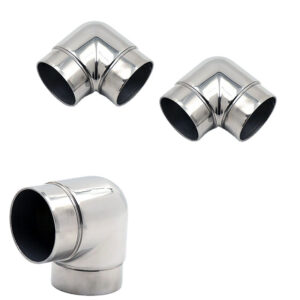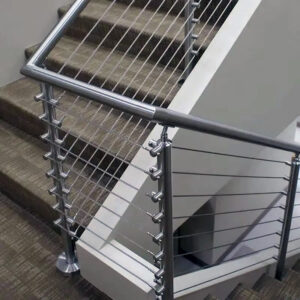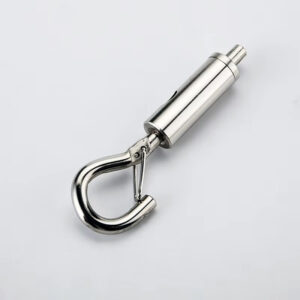Finding exterior stair railing systems that deliver on their promises isn’t getting easier. Code requirements keep evolving, installation teams face tighter deadlines, and maintenance costs can destroy project economics. After 23 years manufacturing stainless steel railing hardware, we’ve learned what separates systems that work from expensive problems. The key lies in matching the right 316-grade components to your specific environment and installation requirements, then backing everything with parts that actually fit together the first time.
Complete Exterior Stair Railings 316 Systems
Handrail System Components
Our handrail systems include wall-mount, post-mount, surface-mount, and continuous rail configurations. Each system uses precision-machined 316 stainless components designed for consistent assembly. Wall brackets adjust 2-6 inches from mounting surface, accommodating typical construction variations without custom fabrication. Post connections use standardized mounting hardware that works across different rail profiles and post sizes.
Surface treatments include brushed 316 finish for reduced maintenance visibility and mirror polish for architectural applications. Both treatments provide identical corrosion resistance—the choice depends on your maintenance approach and aesthetic requirements.
Railing Posts and Structural Components
316 stainless posts handle standard 200-pound concentrated loads per building codes, with options for higher-capacity applications. Square and round profiles from 1.5″ to 4″ accommodate everything from residential stairs to commercial installations. Wall thickness ranges from 14-gauge for standard applications to 11-gauge for high-traffic areas.
Post mounting systems include adjustable base plates for uneven surfaces, core drilling anchors for concrete, and through-bolt configurations for steel structure attachment. Each mounting system includes stainless hardware rated for exterior exposure.
Glass and Cable Integration Hardware
Glass panel systems use 316 stainless clamps, spigots, and standoffs rated for wind loads up to 30 PSF. Panel thickness accommodation ranges from 1/4″ to 3/4″ tempered glass. Base shoe systems provide weather sealing while allowing thermal movement.
Cable railing hardware includes tensioning systems, through-post fittings, and intermediate supports. Cable stays tight longer with proper tensioning hardware—our systems maintain specified loads through normal thermal cycling.
Technical Specifications for Exterior Applications
| Component Type | Load Capacity | Material Grade | Surface Treatment | Temperature Range |
|---|---|---|---|---|
| Handrail Brackets | 200 lbs concentrated | 316 Stainless | Brushed/Mirror | -40°F to 140°F |
| Railing Posts | 50 lbs/ft distributed | 316 Stainless | Brushed/Mirror | -40°F to 140°F |
| Glass Clamps | 30 PSF wind load | 316 Stainless | Brushed/Mirror | -40°F to 140°F |
| Cable Hardware | 1/8″ to 3/16″ cable | 316 Stainless | Brushed/Mirror | -40°F to 140°F |
Material Selection Guide
| Environment | Recommended Grade | Expected Service Life | Maintenance Schedule |
|---|---|---|---|
| Standard Exterior | 316 Stainless | 25+ years | Annual inspection |
| Coastal (>1 mile) | 316 Stainless | 20+ years | Semi-annual cleaning |
| Marine/Waterfront | 316L Marine | 15+ years | Quarterly maintenance |
| Industrial/Chemical | 316L + Coating | 12+ years | Monthly inspection |
Real-World Applications and Performance Data
Commercial Exterior Stair Systems
Office buildings and retail centers demand railing systems that handle high traffic while meeting accessibility codes. Our modular exterior stair manufacturing approach reduces installation time by standardizing connections and reducing field measurements. A recent 12-story office project used our ODM exterior stair manufacturing process to deliver 40 flights of stairs with consistent rail height, bracket spacing, and component alignment.
“Standardized railing components cut installation time up to 40% versus custom fabrication on multi-story projects.” —Construction Industry Research Institute
Commercial projects typically see 15-20% time savings when using pre-configured systems versus field-assembled components. The key lies in having brackets, posts, and rails that align without shimming or adjustment.
Marine Grade Exterior Railings Performance
Coastal and waterfront installations require marine grade exterior railings that resist salt spray and humid conditions. 316L stainless provides superior pitting resistance compared to standard 316 grade. Our marine installations show minimal surface degradation after 5+ years in direct ocean exposure.
A marina project using our custom exterior stair components has operated for 7 years with only routine cleaning maintenance. Original installation included 60 linear feet of handrail, 12 intermediate posts, and glass panel integration. Annual inspections show no structural degradation or fastener corrosion.
▶ Review Marine Installation Case Studies ◀
Industrial and Infrastructure Projects
Manufacturing facilities and infrastructure projects need exterior stair fabrication 316L marine systems that handle heavy use and harsh conditions. Chemical processing plants, water treatment facilities, and power generation sites create demanding environments for railing hardware.
Installation efficiency matters more in industrial settings where downtime costs thousands per hour. Our pre-assembled modules reduce on-site work by 60% compared to stick-built systems. Component standardization means maintenance teams can stock common replacement parts rather than project-specific hardware.
Installation Support and System Integration
Modular Assembly Advantages
Pre-fabricated exterior stair railing modules arrive ready for installation with minimal field assembly. Standard connection points eliminate custom drilling and reduce installation errors. Most installations require only standard tools—no specialized equipment or welding.
“Modular railing design simplified inventory management and reduced project timeline by three weeks.” —Regional Contractor Association
Installation teams report 25-30% faster completion times when using modular systems versus traditional field-built approaches. The difference comes from consistent component fit and reduced measurement requirements.
Quality Control and Technical Support
Manufacturing precision ensures components fit correctly during assembly. 23 years of production experience means we understand how tolerances affect field installation. Each component batch includes dimensional verification and material certification.
Technical support includes installation guidance, design assistance, and troubleshooting help. Our engineering team works with contractors to resolve compatibility questions before they become job site problems.
▶ Connect with Installation Support Team ◀
Supply Chain Integration
Inventory support helps distributors and contractors coordinate material delivery with installation schedules. Batch coordination reduces storage requirements while ensuring complete systems arrive together. Lead times typically run 3-4 weeks for standard configurations, 6-8 weeks for custom exterior stair components.
| Project Size | Standard Lead Time | Custom Lead Time | Minimum Order |
|---|---|---|---|
| Single Flight | 2-3 weeks | 4-6 weeks | No minimum |
| Multi-Flight | 3-4 weeks | 6-8 weeks | No minimum |
| Commercial Project | 4-6 weeks | 8-10 weeks | Quote basis |
| Industrial Installation | 6-8 weeks | 10-12 weeks | Quote basis |
Frequently Asked Questions
How do I choose between 316 and 316L for exterior applications?
Standard 316 stainless works well for most exterior applications more than 1 mile from saltwater. Choose 316L marine grade for direct coastal exposure, industrial chemical environments, or where maximum corrosion resistance justifies the additional cost. The performance difference becomes significant in harsh environments but may not be necessary for typical commercial installations.
What’s the real installation time difference with modular systems?
Contractors typically report 25-40% faster installation with pre-assembled modules versus field-built systems. The biggest time savings come from reduced measurement, fewer connection points, and consistent component alignment. A standard residential flight might take 4-6 hours with modular components versus 8-10 hours for traditional assembly.
How do maintenance requirements differ between surface finishes?
Brushed 316 finish hides minor scratches and water spots better than mirror polish, reducing apparent maintenance needs. Both finishes provide identical corrosion protection—the choice affects appearance over time rather than structural performance. Mirror polish requires more frequent cleaning to maintain appearance but shows no difference in actual durability.
What inventory approach works best for distributors?
Stock standard brackets, posts, and rail sections in common sizes rather than complete systems. This approach covers 80% of applications while minimizing inventory investment. Custom configurations typically require 4-6 week lead times, so advance planning makes more difference than extensive inventory.
▶ Discuss Inventory Strategy Options ◀
How do load requirements affect component selection?
Building codes specify minimum 200-pound concentrated load and 50 pounds per linear foot distributed load for handrails. Our standard components exceed these requirements, but high-traffic applications may benefit from heavier-duty options. Industrial installations often specify higher loads—discuss specific requirements during design phase.
What’s involved in code compliance verification?
Most jurisdictions require engineered drawings and material certifications for commercial installations. We provide material certs and can coordinate with local engineers for structural calculations. Residential applications typically need only permit drawings showing component locations and attachment methods.
System Comparison and Selection Criteria
| System Type | Best Applications | Installation Complexity | Maintenance Level | Cost Range |
|---|---|---|---|---|
| Standard Rail/Post | General commercial, residential | Moderate | Low | $ |
| Glass Panel Integration | Architectural, high-end residential | Higher | Moderate | $$ |
| Cable Systems | Modern aesthetic, view preservation | Moderate | Higher | $$ |
| Heavy-Duty Industrial | Manufacturing, infrastructure | Lower | Low | $$$ |
The right exterior stair railings 316 system depends on balancing performance requirements with installation and maintenance realities. Standard rail and post systems offer the best combination of cost and reliability for most applications. Glass integration provides architectural appeal but requires more precise installation. Cable systems preserve views but need periodic tensioning maintenance.
After 23 years manufacturing railing hardware, Esang Metal has learned that the best system is the one that installs correctly the first time and performs as specified throughout its service life. Our approach focuses on providing components that work together reliably rather than pushing premium features that may not match your project requirements.
